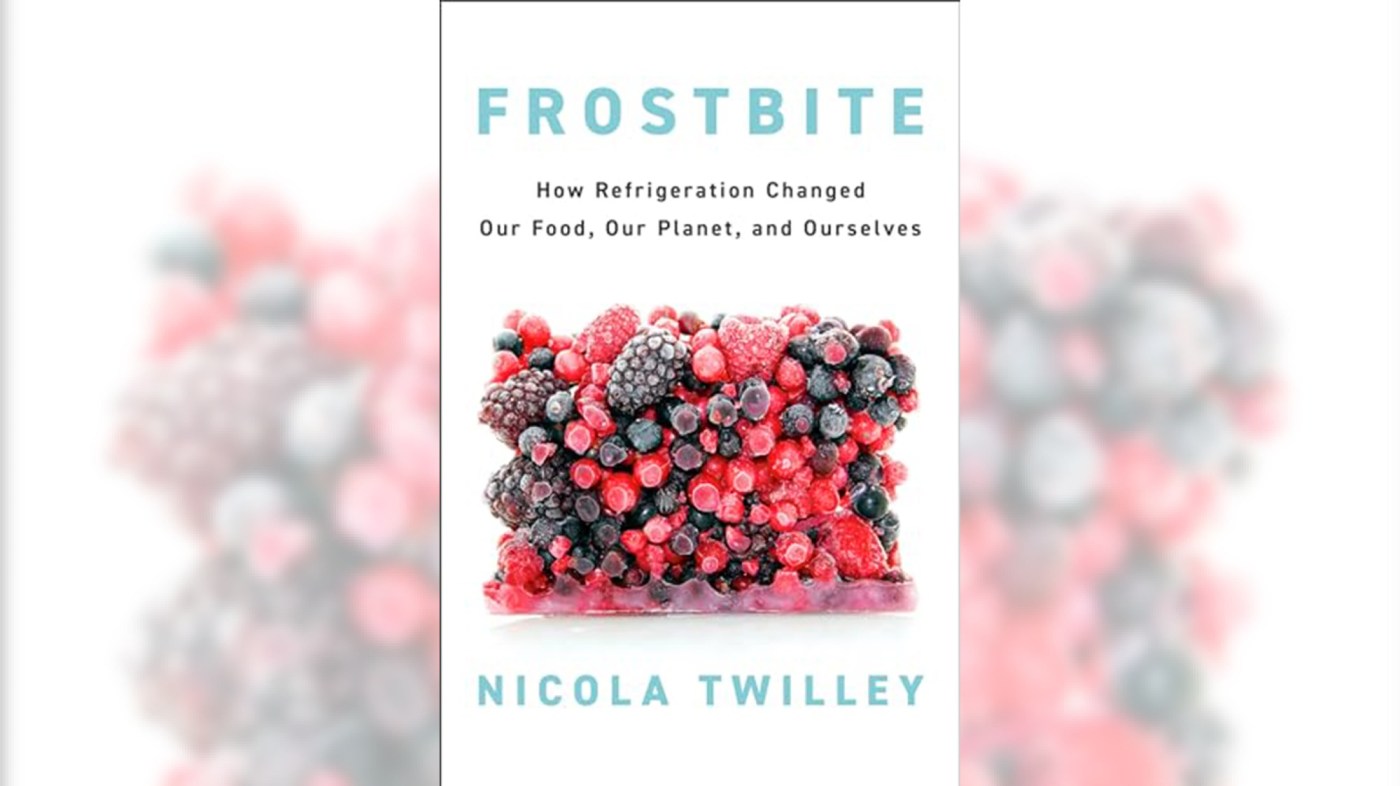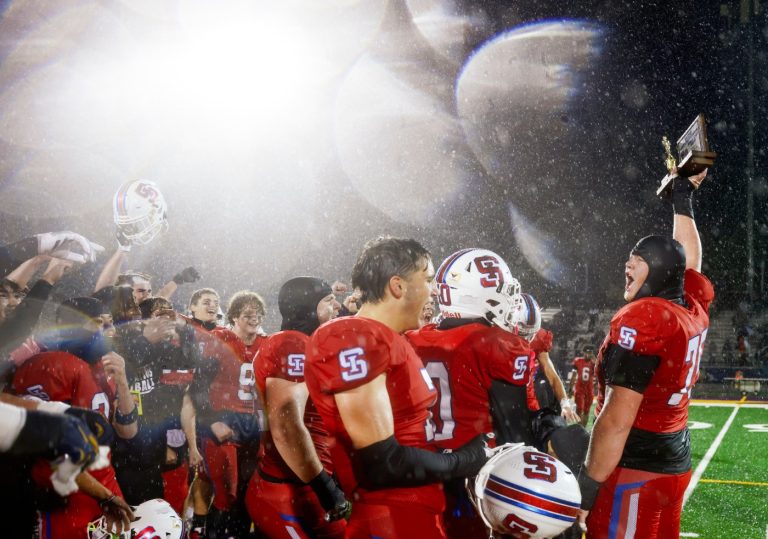It’s a mid-July morning in the Bronx, just outside the sprawling Hunts Point Produce Market, which keeps millions of New Yorkers in fresh fruit and vegetables. Early sunlight radiates around the warehouses and trucks, while a few fallen oranges lost in the predawn rush slowly bake on the roadway. It’s going to be another hot day in another excessively hot year. But I’ve come here to visit one of the final links in an almost unbroken chain of perpetual cold.
Nicola Twilley is like the Ernest Shackleton of the planet’s artificial cryosphere. She views engineered cold space as akin to a third polar region consisting of climate-controlled warehouses, refrigerated shipping containers and trucks, chilled air cargo cases for prized sushi-grade tuna and, of course, our home appliances. Twilley, a Los Angeles-based food journalist, spent a dozen years exploring the farthest reaches of this globalized network, making her perhaps the only outsider to travel so extensively through the refrigeration-industrial complex.
The result is a new book, “Frostbite: How Refrigeration Changed Our Food, Our Planet, and Ourselves,” a technological history and a global travelogue. “Nearly three-quarters of what Americans consume passes through the cold chain at some point,” Twilley says. Her project began when she realized everyone was basically ignoring the “to” in the ever-present farm-to-table foodie ideal.
This morning in the Bronx, shortly after the release of her book, Twilley has agreed to meet up at produce distributor D’Arrigo New York. It’s at least her fourth trip into the facility. I’m here to interview an author—who I soon discover has brought along her own microphone. In Twilley’s day job, she co-hosts the long-running food podcast Gastropod and contributes articles to the New Yorker, and she’s not going to miss a chance to collect fresh tape.
D’Arrigo is a nondescript facility that handles all manner of produce. Chief Executive Officer Matthew D’Arrigo’s family has been in the business for four generations and was responsible, about a century ago, for the first transcontinental shipment of broccoli from California to New York on a refrigerated train.
It’s not frigid inside D’Arrigo’s produce rooms, unlike some of the hypermodern deep-freezes that handle prepared pizzas, cases of yogurt and sides of beef, and for which Twilley had to don specialized protective gear and undergo safety training. But the rooms and loading bays are kept at ambient chills ranging from just north of freezing to 45F, and it feels bracing to step inside on one of summer’s hottest days.
Boxes of Pink Lady apples from upstate New York sit beside cases of California-grown celery and strawberries, all of it subject to carefully delineated preservation techniques. “These are 10-month-old apples,” D’Arrigo notes at one point. The gradual discovery of how to “wake” apples after as much as a year in a climate-controlled sleep comprises a fascinating section of Twilley’s book.
But this tour is going to focus on the banana, among the fruits least associated with refrigeration and yet most shaped by its cold logic. By D’Arrigo’s account, the crates of bananas unloaded here in a bright green state have spent a few days to a week at their Central American point of origin, up to 12 days traveling by ship and as little as one day coming through the port in Wilmington, Delaware. “When it comes off the tree, it’s going to be hot, and you’re going to want to get the temperature down quick,” D’Arrigo says. Doing so ensures the hard, green product can travel without blemish. The required finishing touch comes with the help of ethylene gas in D’Arrigo’s banana-gassing rooms, without which the fruit would be unlikely to ever ripen.
After 24 to 48 hours in the gas, depending on the desired ripeness, bananas in every state of yellow hit the shelves in thousands of New York City bodegas and groceries. All told, the bananas have an off-the-tree lifespan of about three weeks before they reach the consumer—and almost all of that’s spent in the cold. “And then we ripen it on demand!” Twilley will later enthuse during an interview following our tour. “We use a plant hormone to trick the poor banana into thinking it’s back on the tree again and it’s time to ripen.”
This is a major feat of technological mastery that’s completely transformed a squishy, fragile fruit once so rare and prized that it was exhibited under an armed guard at the 1876 Philadelphia Centennial Exposition. Today, Twilley notes, the banana is the most consumed fruit in the world. “The most forsaken gas station has a banana, you know?” she says. “It’s this triumph over nature.”
Related Articles
2 ex-cops accused of sham raid to extort $37 million from California business man
Today in History: August 13, East Germany closes Berlin border
At the Paris Olympics, cities and countries were discreetly making their case to host in 2036
France hands off Olympic Games to California
How the Paris Olympics spun ratings gold for NBC and Peacock
But cold victory comes with consequences. The globalized, industrialized banana exists as a textbook example of monoculture under mounting threat from blight. Its cultivation as a commodity has given us political instability, economic exploitation and a history of American interventions by the Central Intelligence Agency. It’s not entirely a coincidence that the development of refrigeration coincides with the advent of the term “banana republic.”
Twilley’s book is full of remarkable reasons to find astonishment in what the refrigerator has wrought. Hooded sweatshirts? First designed for workers in refrigerated warehouses in the 1930s. Ireland’s independence? Perhaps an indirect consequence of refrigeration tanking the price of beef once English city dwellers started getting access to cattle raised as far away as South America.
The book offers tidbits of forgotten history, including a five-course banquet for more than 400 grandees held at Chicago’s Hotel Sherman in 1911 at which “everything except for the olives in their dry martinis had spent between six months and a year in refrigerated rooms of local cold-storage companies,” as Twilley writes. Early efforts didn’t always go well. Don’t try reading one disgusting section of Twilley’s book on a full stomach. It covers the years of failure, food poisoning and unregulated chemical additives that preceded mastery of cold-chain meat logistics.
Yet the image that lingered with me after reading “Frostbite” was not rotting steaks but Twilley’s conceptualization of a man-made zone of engineered cold that’s rapidly expanding just as the world’s glaciers and permafrost are in a nonstop retreat. That’s a problem likely to get worse in what Twilley terms “the global cold rush.” As billions of consumers in the developing world move to cities and gain wealth, they’re adopting diets with more meat, dairy and other perishables. Supplying everyone with as much cold space as underpins the typical American’s appetite would require “increasing the volume of mechanically cooled space on Earth tens of times over,” Twilley warns in the book.
And Americans aren’t even done expanding on the more than 5.5 billion cubic feet of cooled warehouses that already exist in the US. The first nation of refrigeration, whose iced beverages dazzle even comparably wealthy European tourists, is currently adding to its cold chain at what Twilley says is a rate not seen since the postwar boom. In China, starting from a much lower baseline, the surging growth in cold storage is absolutely immense. Controlling nature “was the promise of the 20th century,” Twilley says, “and I feel like the 21st century is when we pay the bill on that. Here we are 150 years after the first refrigeration machines were commercialized. Isn’t it time for an accounting?”
Rutkoff, an executive editor in New York, oversees Bloomberg Green.
©2024 Bloomberg L.P. Visit bloomberg.com. Distributed by Tribune Content Agency, LLC.












